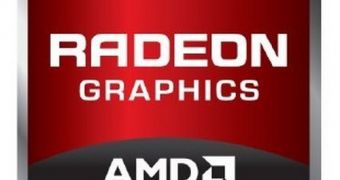As many people probably expected, Advanced Micro Devices proved unable to keep the specifications of the Pitcairn GPU hidden until the official launch.
This may or may not be a controlled leak, given how the formal introduction of the 28nm Pitcairn GPUs is not really all that far off.
It is in March that this graphics chip from the Sunnyvale, California-based company is set to be unleashed upon the world, as part of the Radeon HD 7800 series of video controllers.
Two boards will be available (or three, if one counts the distinct memory options), at least at first: Radeon HD 7870 and Radeon HD 7850.
On the former, the GPU will work at full power, with 22 Graphics CoreNext Compute Units (GCN CUs) and, thus, 1,408 stream processors.
The list of features goes on with 88 TMUs, 24 ROPs (de-linked from the memory bus) and a clock speed of 950 MHz.
Meanwhile, the memory capacity is of 2 GB (GDDR5), relies on a 256-bit wide interface and comes with an operational frequency of 1,375 MHz (5.50 GHz effective).
The other card, 7850, as the weaker model, has 20 GCN CUs, 80 TMUs, 24 ROPs (de-linked from the memory bus, as above), 2 GB or 1 GB of GDDR5 memory and clock speeds of 900 MHz for the GPU and 1250 MHz (5.00 GHz effective) for the memory.
The price point that this duo will hover around is the sub-$300, a sum that translates into 227.30 Euro and is quite convenient for the bulk of the gamer market segment.
On a related note, during the months after March, an AMD Radeon HD 7890 will probably be revealed as well, powered by the Tahiti GPU.
Advanced Micro Devices wants to have its entire 28nm graphics card collection out before NVIDIA launches even one Kepler.
With struggling supply, though, this head start might not make all that much of a difference, even if NVIDIA is affected as well, much to the dismay of its flourishing supercomputing business, which has placed high hopes in Kepler.

 14 DAY TRIAL //
14 DAY TRIAL //